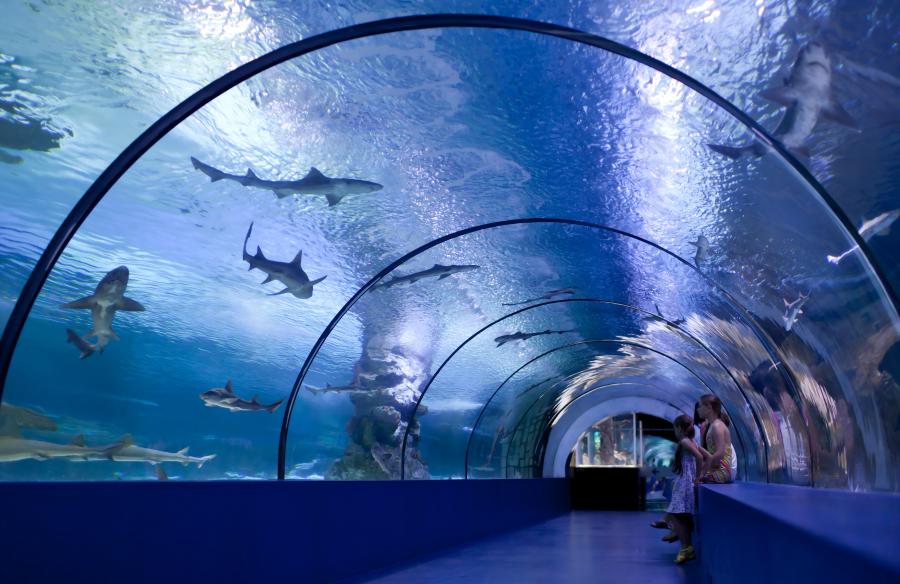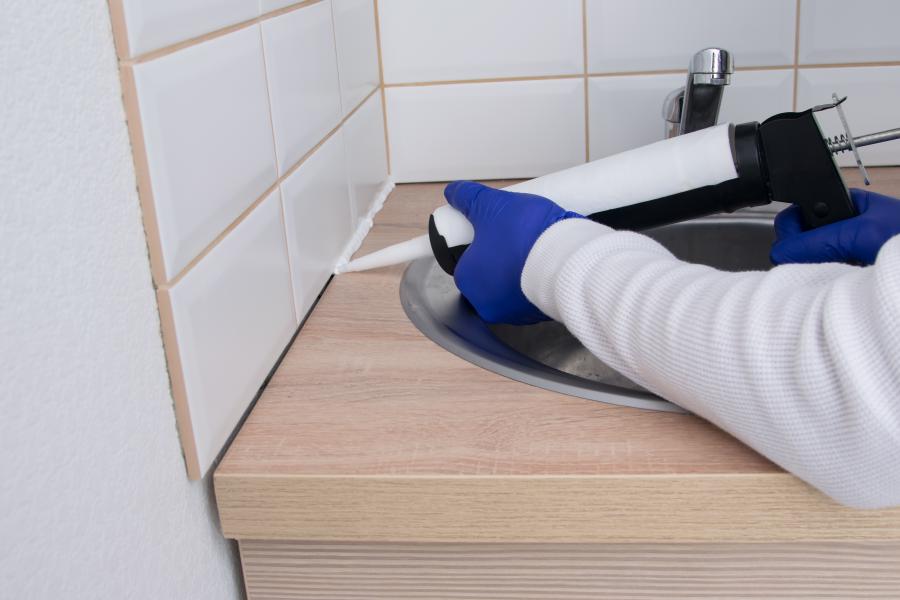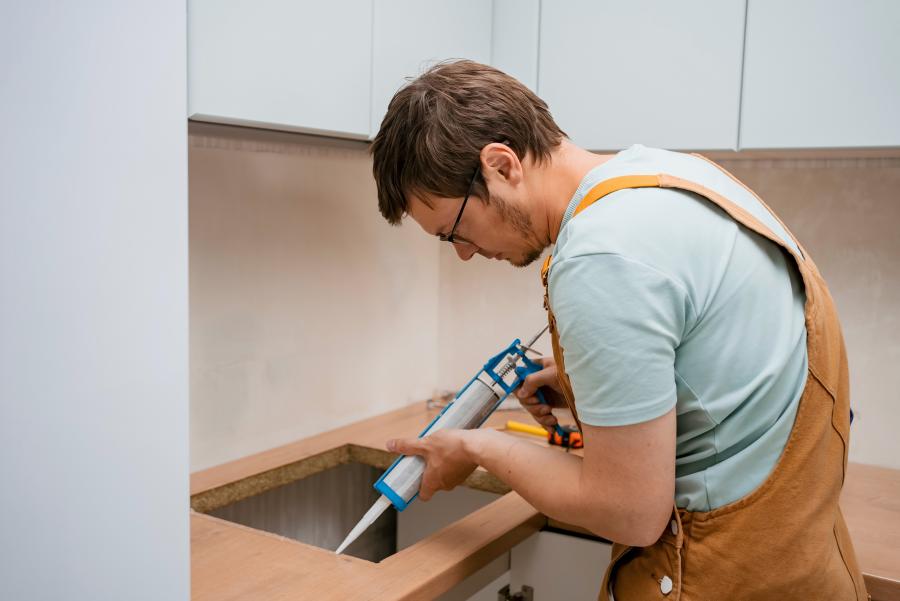Expert guidance from BoPin Construction Chemicals – protecting your property from water damage
Don’t Just Resist Water—Make It Waterproof
A small leak can lead to thousands in damage. Water doesn’t announce itself with dramatic failures. It works silently, seeping into walls, rotting framing, destroying insulation, and creating mold that threatens your family’s health.
When it comes to protecting your home from water, “water-resistant” isn’t enough. You need a truly waterproof seal that can withstand the toughest conditions, year after year, without degradation or failure.
Here’s what most people don’t realize: The difference between water-resistant and waterproof can mean the difference between minor maintenance and catastrophic damage requiring tens of thousands in repairs.
This guide will cut through the confusion. We’ll break down the different types of waterproof sealants. You’ll learn what professionals look for when specifying products. And we’ll help you choose the absolute best product for a permanent, leak-proof seal you can trust.
The result? Complete confidence that your waterproof barriers will protect your investment for decades, not just months.
What Actually Makes a Sealant Waterproof?
Understanding the science helps you make informed decisions and avoid products that promise waterproofing but deliver failure.
The Science of Polymers
True waterproofing comes from the chemical makeup of the sealant, not marketing claims or thick application. Silicone polymers and advanced hybrid polymers are inherently non-porous at the molecular level.
What this means in practice:
- Water molecules cannot penetrate the polymer structure
- The material doesn’t absorb moisture even under continuous exposure
- Chemical bonds remain stable despite constant water contact
- Performance doesn’t degrade over time from water exposure
Inferior sealants may initially repel water but their chemical structure allows gradual water penetration that leads to failure.
Waterproof vs. Water-Resistant: The Critical Distinction
This difference determines success or failure in demanding applications. Understanding it saves you from costly mistakes.
Water-Resistant Products:
- Can handle occasional splashes and light moisture
- Provide temporary protection that may fail over time
- Break down under continuous water exposure
- Lose effectiveness when subjected to water pressure
- Acceptable for sheltered indoor applications
Waterproof Products:
- Can withstand continuous water immersion indefinitely
- Maintain complete protection under water pressure
- Never break down from water exposure
- Permanently flexible despite constant moisture
- Essential for bathrooms, kitchens, exteriors, and any critical application
Professional contractors specify waterproof products because their liability and reputation depend on permanent protection.
The Main Types of Waterproof Sealants: Which is Best for Your Job?
Different waterproof technologies excel in different applications. Understanding these differences helps you match the product to your project.
Professional Comparison
| Sealant Type | Best For… | Key Advantage |
|---|---|---|
| 100% Silicone | Bathrooms, kitchens, high-moisture areas | Ultimate waterproofing & flexibility |
| Hybrid MS Polymer | Windows, siding, gutters, all-weather use | Excellent durability & paintability |
| Elastomeric/Rubberized | Roofs, flashing, foundations | Thick, heavy-duty patching capability |
100% Silicone: The Waterproofing Champion
100% silicone sealants provide the highest level of waterproof protection available in flexible sealant products.
Unmatched waterproof performance:
- Permanent water impermeability – never degrades from moisture
- Extreme flexibility (±25% to ±50%) accommodates movement without failing
- Superior adhesion to non-porous surfaces like glass, ceramic, and metal
- Unlimited temperature cycling without brittleness or softening
- Chemical resistance to cleaning products and environmental exposure
Best applications:
- Shower enclosures and bathtub perimeters
- Kitchen backsplashes and sink perimeters
- Aquariums and water features
- Wet room installations
- Any application with continuous water exposure
Considerations:
- Not paintable – accept the color as-is
- Requires clean, dry surfaces for proper adhesion
- Higher material cost than water-resistant alternatives
Hybrid MS Polymer: The Versatile Performer
MS Polymer technology combines silicone-like waterproofing with enhanced properties that silicone cannot provide.
Unique advantages:
- Truly waterproof like silicone but paintable for aesthetic flexibility
- Excellent adhesion to difficult materials including PVC and damp surfaces
- Superior UV resistance for long-term exterior performance
- All-weather application including low temperatures where silicone fails
- Environmentally safer with no isocyanates or solvents
Best applications:
- Exterior window and door perimeters
- Siding joints and transitions
- Gutter and downspout connections
- Metal roofing and panel systems
- Any waterproof application requiring paint
Considerations:
- Slightly higher cost than basic silicone
- Longer cure time than some alternatives
- Not for continuous submersion applications
Elastomeric/Rubberized: The Heavy-Duty Specialist
Thick, paste-like sealants designed for heavy-duty patching and repairs in demanding applications.
Specialized capabilities:
- Very thick application fills large gaps and irregular surfaces
- Excellent for horizontal surfaces like roofs and flashing
- Strong adhesion to challenging surfaces like concrete and bitumen
- Self-leveling options for large-area application
- Immediate water resistance in emergency situations
Best applications:
- Roof repairs and flashing
- Foundation waterproofing
- Concrete joint sealing
- Emergency leak repairs
- Large-gap filling applications
Considerations:
- Less flexible than silicone or MS polymers
- UV sensitivity in some formulations
- Appearance may not be suitable for visible areas
A Pro’s Checklist for Truly Waterproof Sealant
Professional contractors use these non-negotiable criteria when specifying waterproof sealants for critical applications.
✓ Explicitly Labeled “100% Waterproof”
The label must state waterproof capabilities clearly and explicitly. Vague terms like “moisture resistant” or “suitable for damp areas” indicate water-resistant, not waterproof products.
Look for specific claims:
- “100% Waterproof”
- “Continuous immersion rated”
- “Permanent waterproof barrier”
- Standards compliance (ASTM C920, ISO 11600)
Avoid products that only claim “water resistance” – they will fail in waterproof applications.
✓ Permanent Flexibility – ASTM C920 Compliance
The sealant must remain permanently flexible without shrinking, cracking, or becoming brittle. ASTM C920 is the key standard for weatherproof sealants.
What ASTM C920 compliance guarantees:
- Movement capability of at least ±25%
- Adhesion durability through weathering cycles
- No hardening or embrittlement with age
- Dimensional stability without shrinkage
Products without ASTM C920 compliance should not be used for critical waterproofing.
✓ “Wet Surface” Application Capability
This feature is critical for emergency repairs and situations where complete drying isn’t possible before application.
Premium waterproof sealants can bond to:
- Damp surfaces (not dripping wet, but moist)
- Cold surfaces where condensation occurs
- Emergency situations requiring immediate protection
Standard sealants require bone-dry surfaces – a problem in urgent repair situations.
✓ UV Resistance for Exterior Use
Any waterproof sealant used outdoors must resist UV degradation. Sunlight destroys products not specifically formulated for exterior use.
UV-resistant sealants maintain:
- Color stability without yellowing or fading
- Flexibility despite constant sun exposure
- Adhesion that doesn’t fail from UV breakdown
- Waterproofing for decades in direct sunlight
Interior-only products fail rapidly when used in exterior applications.
Our #1 Recommendation: The Best All-Around Waterproof Sealant
For maximum waterproof protection across the widest range of applications, we recommend advanced MS polymer technology.
BoPin MS-120 Multi-Purpose MS Polymer Sealant & Adhesive
BoPin MS-120 Multi-Purpose Sealant delivers exceptional waterproof performance with versatility that pure silicone cannot match.
Why It’s the Professional’s Choice:
Absolute Waterproofing: Engineered to create a permanent, impenetrable barrier against water, even in standing water conditions. MS polymer chemistry provides waterproofing equivalent to 100% silicone.
All-Weather Application: Can be applied to wet or dry surfaces and in temperatures from -5°C to +40°C for immediate emergency repairs. No waiting for perfect conditions.
Crack-Proof Guarantee: Exceptional movement capability (±25%) stays permanently flexible, withstanding building movement and extreme weather without failing.
Paintable Flexibility: Unlike 100% silicone, accepts most water-based and synthetic paints for aesthetic flexibility while maintaining waterproof performance.
Universal Adhesion: Excellent bonding to most surfaces including damp substrates, eliminating delays waiting for surfaces to dry completely.
Environmentally Superior: Isocyanate and solvent-free formulation with very low VOC content (<40 g/L) for safer application in occupied spaces.
For Specialized Applications
Bathroom/Kitchen wet areas: BoPin 550 Sanitary Silicone with advanced anti-mold technology
Metal roofing systems: BoPin MS-340 Metal Roof Sealant with ±50% movement capability
Natural stone applications: BoPin 635 Natural Stone Silicone with non-staining formula
How to Apply Waterproof Sealant for a Perfect Seal
Even the best waterproof sealant will fail with poor application. Follow these professional steps for guaranteed results.
Step 1: Complete Removal of Old Sealant
This is the #1 key to success. Any old material left behind will prevent proper adhesion and create failure points.
Professional removal technique:
- Cut along both edges with a sharp utility knife
- Pull away bulk material using pliers or scraper
- Remove every trace – even small pieces prevent adhesion
- Use sealant remover for stubborn residues
- Verify complete removal by running your finger along the joint
Shortcuts here guarantee failure later.
Step 2: Deep Clean & Dry
Perfect adhesion requires perfectly clean surfaces. Any contamination prevents the chemical bond necessary for waterproof integrity.
Cleaning procedure:
- Wipe with appropriate solvent (alcohol for most applications)
- Remove all soap scum, oils, and residues
- Allow complete drying before application
- Verify cleanliness – surfaces should feel squeaky clean
Even fingerprints can compromise adhesion in critical applications.
Step 3: Apply & Tool Professionally
Application technique affects both appearance and performance.
Professional application:
- Cut nozzle at 45° angle for appropriate bead size
- Apply steady, even pressure while moving at consistent speed
- Create continuous beads without gaps or stops
- Tool within working time (typically 5-20 minutes)
- Use appropriate tooling – wet finger or smoothing tool
- Create concave profile that sheds water effectively
Poor tooling creates weak spots that compromise waterproofing.
Step 4: Respect Cure Time
Understanding cure stages prevents premature failure. There’s a critical difference between “water-ready” and “fully cured.”
Cure stage progression:
Skin formation (10-30 minutes): Surface becomes touch-dry but interior remains liquid. DO NOT expose to water yet.
Water-ready (varies by product): Can handle light water exposure without damage. BoPin MS-120 typically reaches this stage in 2-4 hours.
Full cure (24-72 hours): Achieves complete waterproof properties and maximum performance. Required before exposing to continuous water or significant stress.
Rushing cure time is the fastest way to ruin an otherwise perfect installation.
Waterproof Sealant FAQ
Can I apply waterproof caulk in the rain?
Most waterproof sealants require dry application conditions for proper curing and adhesion. However, advanced products like BoPin MS-120 can be applied to damp (not wet) surfaces and cure in humid conditions.
For true emergency repairs during rain, specialized wet-surface products are available but should be followed up with proper resealing when conditions improve.
Is waterproof caulk paintable?
100% silicone sealants are generally NOT paintable because paint cannot chemically bond to the smooth silicone surface.
For paintable waterproof protection, choose MS Polymer hybrid sealants like BoPin MS-120 that combine waterproof performance with paint compatibility.
Test paint compatibility on a small area first to ensure satisfactory results.
What is the strongest waterproof sealant?
“Strongest” depends on the type of stress:
For adhesive/bonding strength: MS polymer adhesive-sealants like BoPin MS-850 provide up to 3.0 MPa tensile strength while maintaining waterproof properties.
For flexibility/movement: Premium silicones with ±50% movement capability handle extreme expansion/contraction better than any alternative.
For all-around waterproof performance: BoPin MS-120 offers the best balance of strength, flexibility, and waterproofing.
How long does waterproof sealant last?
Quality waterproof sealants like BoPin products last 15-25 years when properly applied and maintained.
Factors affecting lifespan:
- Product quality – premium formulations last much longer
- Application conditions – proper installation critical
- Environmental exposure – UV, temperature extremes affect durability
- Maintenance – regular cleaning and inspection extend life
Cheap alternatives may only last 3-5 years before requiring replacement.
Can waterproof sealant be used underwater?
Most waterproof sealants require application in dry conditions even though they can withstand water after curing.
For underwater repairs, specialized marine sealants are available that cure in wet/submerged conditions.
Standard waterproof sealants excel at preventing water penetration but aren’t designed for application while submerged.
Don’t Just Seal It, Make It Watertight
A lasting waterproof seal depends on choosing the right technology for your specific application and following meticulous surface preparation and application procedures.
The cost difference between water-resistant and truly waterproof products is minimal compared to the catastrophic cost of water damage from using inadequate materials.
Professional contractors never compromise on waterproofing because they understand that water damage claims far exceed any savings from cheaper products.
Your home deserves the same professional-grade protection. Water damage doesn’t just affect property value – it threatens your family’s health and safety.
Remember: Small leaks become big problems. What starts as a damp spot can become thousands in mold remediation, structural repairs, and health issues.
Invest in proper waterproofing once, and you won’t need to worry about water damage for decades.
Stop worrying about water damage. Get the professional-grade protection your home or project deserves. Explore our complete line of 100% waterproof sealants engineered for permanent, reliable performance.
Need expert guidance on waterproofing solutions? BoPin Construction Chemicals provides professional-grade products and comprehensive technical support for permanent water protection.




